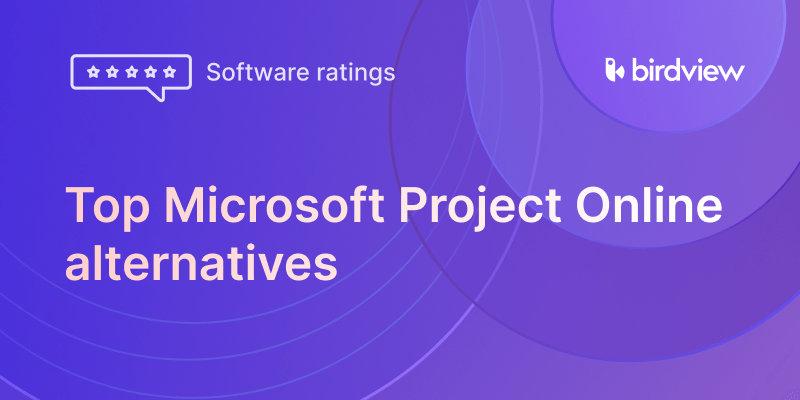When your organization grows beyond a handful of isolated projects, traditional project management starts to break down. Siloed tools, inconsistent priorities, duplicated efforts, and unclear reporting quickly become barriers to progress. That‘s where enterprise project management (EPM) comes in–not as extra bureaucracy, but as a structured way to align strategy, execution, and people across the business.
EPM isn‘t just about tracking timelines and budgets. It‘s a holistic approach to coordinating all projects so they support the organization‘s strategic goals. It brings clarity to complex environments, reduces wasted effort, and gives teams the visibility they need to focus on what matters most.
In this guide, we‘ll walk through a practical roadmap for implementing EPM at scale–from building a strategy and selecting tools to standardizing processes and managing change–using real examples and actionable tips throughout.
In this article
Enterprise vs. traditional project management: key differences
While both traditional and enterprise project management aim to deliver successful outcomes, they operate at very different levels. Traditional project management focuses on completing individual projects efficiently–on time, on budget, and within scope. Enterprise project management (EPM), on the other hand, looks at the bigger picture: it coordinates multiple projects across teams, departments, and portfolios to ensure they collectively advance strategic business goals.
💡 For example, a traditional project manager may be responsible for delivering a website redesign. An enterprise PMO, by contrast, considers how that project fits into a broader initiative–like a digital transformation program–and whether the right resources and capacity exist across the entire portfolio.
Let‘s break down the core differences:
-
Scope: Traditional PM is project-specific. EPM manages cross-functional portfolios with interdependencies.
-
Decision-making: Traditional PM decisions are made within the project team. EPM introduces governance across business units and aligns efforts with long-term strategy.
-
Tools: Traditional tools like Excel or Trello can support smaller projects. EPM relies on scalable platforms with capacity planning, portfolio dashboards, and real-time reporting–like Birdview PSA.
-
Reporting: Traditional PM often depends on manual updates. EPM uses centralized, automated data to guide high-level decisions.
-
Adaptability: Traditional PM adapts within the project. EPM enables broader flexibility by allowing organizations to reprioritize entire portfolios based on changing business needs.
💡 Real-world example: An EPMO might choose to pause a perfectly “on-track” project if it no longer aligns with updated business goals–something a traditional PM wouldn‘t have visibility or authority to do.
A narrative example: digital transformation in healthcare
Take, for instance, a hospital group undergoing a major digital transformation. The organization wants to modernize its patient record system. A traditional project manager might begin working immediately on timelines and deliverables. But a well-structured EPMO takes a more strategic approach: it starts by validating whether the initiative aligns with the organization’s broader goal of improving patient care delivery.
The EPMO audits current tools and processes, identifies the lack of portfolio visibility, and rolls out Smartsheet across IT and clinical departments. They appoint an internal coach to support project leads, set up a centralized change control board, and standardize executive dashboards for status reporting.
Within six months, reporting time is reduced by 40%, budget overruns decrease, and leadership gains the clarity needed to expand EPM practices to other areas like compliance and infrastructure upgrades.
From comparison to action: what comes next
Understanding how EPM differs from traditional project management is only the beginning. The real challenge–and opportunity–lies in putting it into practice.
So how do you implement enterprise project management in a way that delivers real business value?
Let‘s walk through the seven essential steps every organization should take to make EPM a scalable, strategic capability.
The 7 essential steps to implement enterprise project management
Implementing enterprise project management (EPM) isn‘t just about installing a new tool or drafting a few process documents–it‘s about transforming how your organization connects strategy with execution. Whether you’re launching a formal EPMO or evolving your current project ecosystem, success depends on how well you align leadership, tools, teams, and workflows around a common strategic vision.
In the sections that follow, you‘ll learn seven essential steps to roll out EPM effectively–backed by real examples and practical advice for complex enterprise environments.
Step 1: Build your strategy before your structure
Many EPM initiatives fail because they start with tools or org charts instead of business outcomes. Strategy must come first.
Begin by answering a few critical questions:
-
What is the organization trying to achieve in the next 12–36 months?
-
Which major initiatives, transformations, or regulatory pressures are driving change?
-
What role should the project portfolio play in delivering those outcomes?
💡 For example, a global logistics company might define its strategy as “digitize operations and reduce delivery times by 20%.” From there, it becomes easier to assess which existing projects contribute to that goal, which should be paused, and which new ones need to be launched.
Your EPM strategy should be a bridge between high-level corporate vision and on-the-ground project execution.
📍 Tip: Strategy is not a one-time workshop. Make it part of your portfolio cadence. Align quarterly. Recalibrate annually. Use it to guide intake, prioritization, and funding decisions.
Step 2: Build or strengthen your EPMO
Once you know what you’re solving for, it’s time to decide who will lead and sustain the EPM effort. In most organizations, this is the role of the Enterprise Project Management Office (EPMO).
Unlike traditional PMOs focused on delivery support, the EPMO operates at a strategic level:
-
It evaluates the entire project portfolio against strategic outcomes.
-
It supports consistent governance and performance reporting.
-
It champions resource visibility and cross-functional coordination.
-
It coaches teams on project management best practices.
Don‘t overengineer it on day one. A small but empowered EPMO team–1 director, 1–2 analysts, and a program lead–can drive meaningful impact. Over time, as adoption grows and maturity increases, you can add functions like portfolio forecasting, enterprise risk management, and benefit realization tracking.
💡 Birdview PSA example: Many mid-sized firms start with one program manager using Birdview PSA dashboards to create unified reporting for executives. Once leadership sees the value, it becomes easier to justify a full EPMO rollout.
Step 3: Standardize your project intake and prioritization
Without a consistent intake process, enterprise teams often drown in “noise”: overlapping requests, pet projects, or last-minute executive asks. That chaos makes resource planning nearly impossible.
A successful EPM system includes a standardized project intake process:
-
All new initiatives must submit clear business cases.
-
The EPMO reviews feasibility, alignment with strategy, and capacity.
-
Projects are ranked based on agreed criteria: strategic impact, ROI, regulatory need, etc.
The intake process should be simple enough that teams use it–but structured enough to support decision-making. Many EPMOs use digital forms or intake workflows inside PSA tools like Birdview, Jira, or ServiceNow.
💡 Example: A professional services firm created an intake form in Birdview PSA that routed new requests through department heads and resource leads. This reduced duplicate projects and improved forecasting accuracy.
Step 4: Choose tools that scale across teams and portfolios
Enterprise teams typically outgrow basic tools like Trello or Excel. What‘s needed is a platform that supports:
-
Multi-project visibility
-
Resource allocation across departments
-
Scenario planning and forecasting
-
Integrated time, cost, and revenue tracking
-
Real-time dashboards for executives
Whether you use Microsoft Project, Smartsheet, Wrike, or Birdview PSA, the key is consistency and visibility. Everyone–whether they‘re in marketing, IT, or operations–should be managing their work through the same system, using shared templates, statuses, and reporting formats.
💡 Birdview PSA example: The Resource Workload view in Birdview PSA allows resource managers to spot conflicts across 20+ projects and rebalance in seconds. Meanwhile, executives can view financial performance and capacity in a unified dashboard.
Step 5: Define your process framework (but allow flexibility)
An effective EPM framework defines how projects move from idea to completion. That includes:
-
Stage-gates or phases (e.g., proposal → planning → delivery → closure)
-
Governance checkpoints (e.g., scope approvals, budget updates)
-
Roles and responsibilities (who owns what and when)
However, don‘t be too rigid. Your marketing team might use Agile. Your compliance team might prefer Waterfall. Your framework should support methodology neutrality–standardizing the outcomes while letting teams choose their path.
📍 Tip: Create a common “Project Lifecycle Template” in your tool. Let teams customize tasks, but require consistent gate approvals, scope changes, and reporting.
Step 6: Train people and manage the cultural shift
Rolling out enterprise project management isn‘t just a process change–it‘s a mindset shift. Teams used to autonomy may resist centralized governance. Managers may feel threatened by visibility. Execs may underestimate the time it takes to shift behavior.
That‘s why change management and training are as important as tools or process.
What works:
-
Hands-on workshops for PMs and team leads
-
One-on-one coaching for sponsors and department heads
-
Internal champions who support tool adoption
-
Regular comes from the EPMO and executives
One large Canadian engineering firm trained 30 project leads on Birdview PSA over six weeks. Adoption jumped to 85% in under three months–because leadership actively supported the change and tied it to career growth and delivery success.
Step 7: Monitor performance, report results, and improve
Once your EPM structure is running, don‘t fall into “set it and forget it” mode. Instead, use KPIs to continuously improve how the enterprise delivers work.
Key metrics may include:
-
Strategic alignment scores (what % of portfolio supports key goals)
-
Resource utilization and availability
-
Budget variance
-
Forecast vs actual delivery timelines
-
Project health by department
The EPMO should run monthly portfolio reviews and quarterly retrospectives. What worked? Where were the bottlenecks? What tools or processes need refinement?
💡 Birdview PSA example: Organizations using Birdview often create executive dashboards that auto-refresh weekly, helping the C-suite understand where value is being created (or lost) in real time.
Must-have tools for implementing enterprise project management
To implement enterprise project management (EPM) effectively, you need more than task trackers–you need a connected ecosystem of tools that support planning, execution, and oversight at scale.
Here are the must-haves:
-
Project portfolio management (PPM) platform: Enables cross-project visibility, strategic prioritization, and executive reporting. Tools like Birdview PSA, Smartsheet, or Clarity are built for this.
-
Resource management tool: Helps allocate people across projects based on capacity, skills, and availability–crucial for avoiding burnout and delivery delays.
-
Time tracking and cost control: Accurate time and expense data feeds forecasting, budgeting, and profitability analysis.
-
Intake and workflow automation: Streamlines project requests, approvals, and governance processes for consistency across departments.
-
BI dashboards and reporting: Turns raw project data into actionable insights for PMOs, executives, and team leads.
When these tools work together–ideally in a single platform or tightly integrated stack–they give you the visibility and control needed to run projects strategically, not just operationally.
Project portfolio tool for implementing enterprise project management
A reliable project portfolio management (PPM) tool is a cornerstone of any successful enterprise project management (EPM) implementation. Without it, organizations struggle to see the big picture–projects stay siloed, resources get overcommitted, and executives lack the visibility to make timely, strategic decisions.
A good PPM tool doesn‘t just track tasks. It helps PMOs and strategy teams answer critical questions:
-
Are we investing in the right projects?
-
Where are we over capacity?
-
Which initiatives are off track–and why?
-
How are we aligning execution with business goals?
To support enterprise needs, the tool should include:
-
Cross-project visibility with portfolio dashboards
-
Resource planning to balance workloads and avoid conflicts
-
Centralized intake and prioritization workflows
-
Automated reporting for finance, PMOs, and leadership
-
Scenario planning and forecasting for shifting priorities
💡 Birdview PSA, for example, offers a centralized platform where enterprise teams can plan, execute, and monitor complex portfolios–while giving executives a real-time view of budgets, timelines, and resource capacity. This kind of integrated visibility is essential when you’re managing dozens (or hundreds) of concurrent projects across departments.
In short, a project portfolio tool acts as the control tower for your enterprise initiatives. It doesn‘t just support EPM–it makes it possible.
Enterprise project management with Birdview PSA
Birdview PSA is designed to support every layer of enterprise project management–from daily task execution to high-level portfolio oversight. With built-in tools for resource planning, project intake, time tracking, and real-time dashboards, it helps PMOs and strategy teams stay aligned, make faster decisions, and manage capacity across dozens of projects.
Whether you’re standardizing intake processes, balancing workloads, or tracking performance at the executive level, Birdview provides a centralized view that scales as your organization grows–without overwhelming your teams. It‘s a practical choice for enterprises that need both structure and flexibility.
Ready to bring clarity to your entire project portfolio?
Birdview PSA helps enterprise teams align strategy, manage resources, and track performance across all projects–from intake to execution.
See Birdview PSA in action– and learn how it can power your enterprise project management.

Best Enterprise Collaboration Tools 2025 →
Explore our full Project Portfolio Management Guide →
Top PPM benefits for service businesses. Tips & examples →
Best Project Portfolio Management Software 2025 →
❓Frequently asked questions
1. What is enterprise project management (EPM)?
Enterprise project management (EPM) is a structured approach to managing multiple projects across an organization to ensure they align with strategic goals. Unlike traditional project management, which focuses on individual initiatives, EPM provides visibility, governance, and coordination across entire portfolios.
2. Do I need an EPMO to implement enterprise project management?
While not required, an Enterprise Project Management Office (EPMO) can significantly improve consistency, governance, and strategic alignment. It acts as the central hub for intake, prioritization, performance tracking, and process standardization across the organization.
3. What tools are best for enterprise project management?
Tools that support multi-project visibility, resource planning, time tracking, and executive dashboards are ideal. Examples include Birdview PSA, Smartsheet, Microsoft Project, and Clarity. The key is choosing a platform that can scale across departments and integrate with your existing tech stack.
4. How long does it take to implement EPM at scale?
It depends on your organization‘s size and maturity. Some teams start with a 3–6 month pilot, while full rollouts may take 12–18 months. The process should be phased and iterative–starting small, showing value, then scaling across departments.
5. What is project portfolio management, and how does it relate to EPM?
Project portfolio management (PPM) is the process of selecting, prioritizing, and managing a group of projects to achieve strategic business goals. In the context of EPM, PPM ensures that every project in the portfolio is contributing real value, and that resources are allocated to the most important work across the enterprise.
6. How do I prioritize projects in a large portfolio?
Prioritization should be based on strategic alignment, return on investment (ROI), regulatory or operational urgency, and available capacity. Many EPMOs use a scoring system or intake framework to evaluate new initiatives objectively and ensure high-value projects move forward first.
7. How can EPM improve coordination across departments?
EPM introduces shared tools, governance structures, and standardized processes that make it easier for teams in different departments to collaborate. Instead of working in silos, departments gain visibility into shared resources, dependencies, and timelines–improving communication and reducing friction.
8. What are the challenges of managing cross-departmental projects?
The biggest challenges include conflicting priorities, unclear ownership, and lack of visibility across teams. EPM helps solve these issues by defining roles early, implementing centralized reporting, and using tools like Birdview PSA to surface resource conflicts, track progress, and coordinate efforts across departments.
9. How does Birdview PSA support enterprise project management?
Birdview PSA provides a centralized platform for managing project portfolios, resource allocation, intake workflows, and real-time performance dashboards. It helps PMOs and strategy teams align execution with goals, improve visibility, and optimize capacity–without overwhelming teams or overcomplicating processes.



